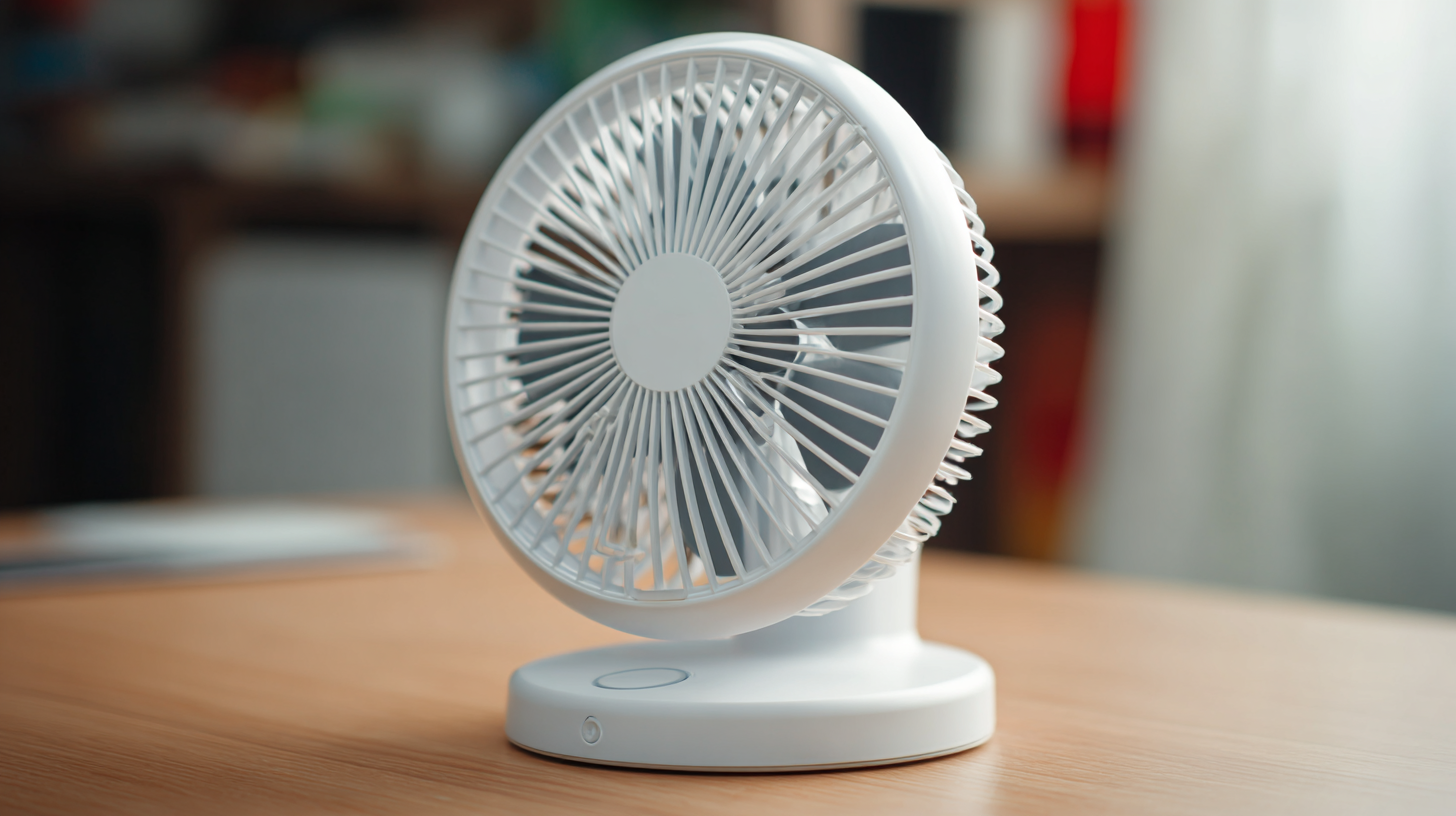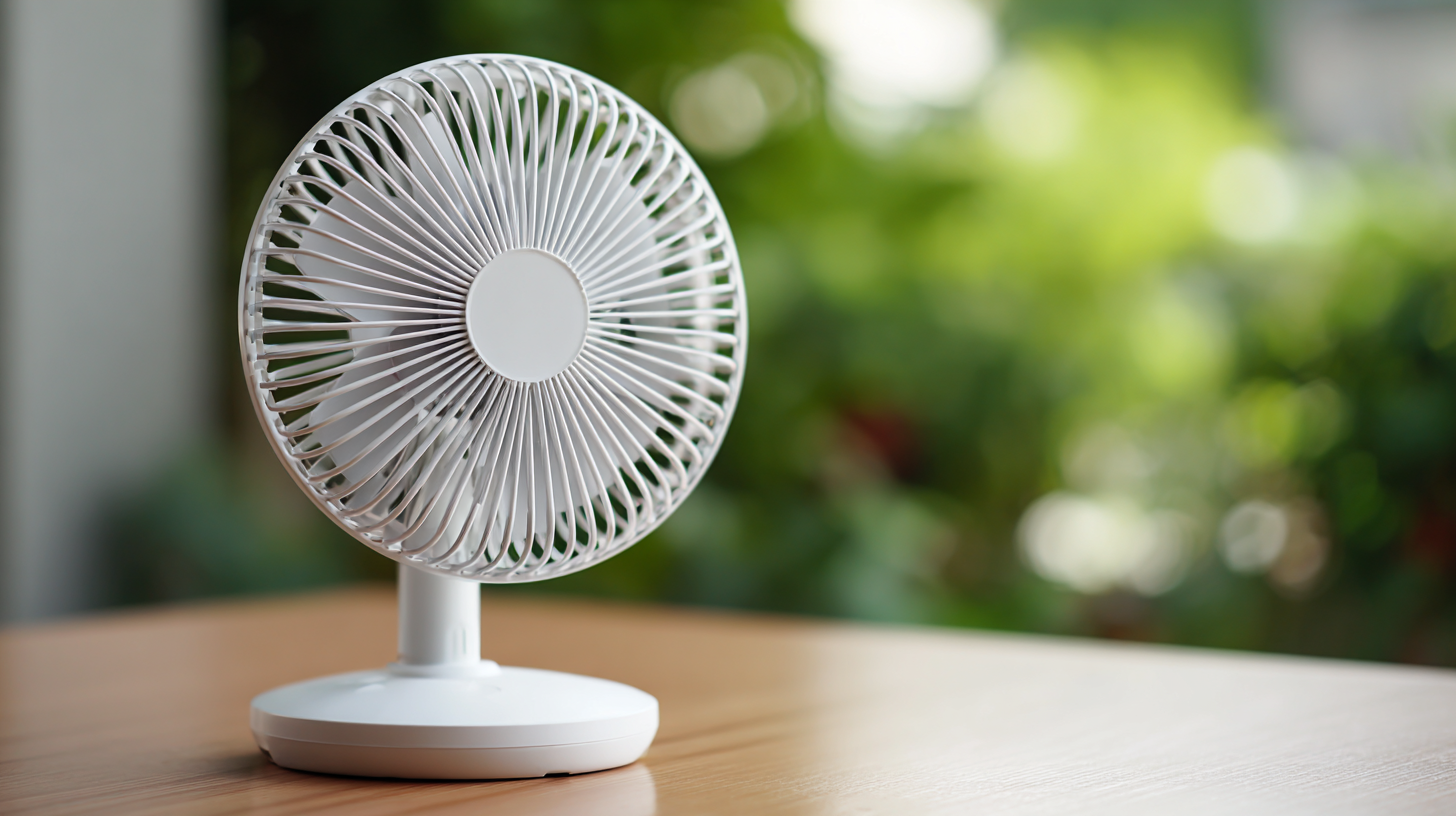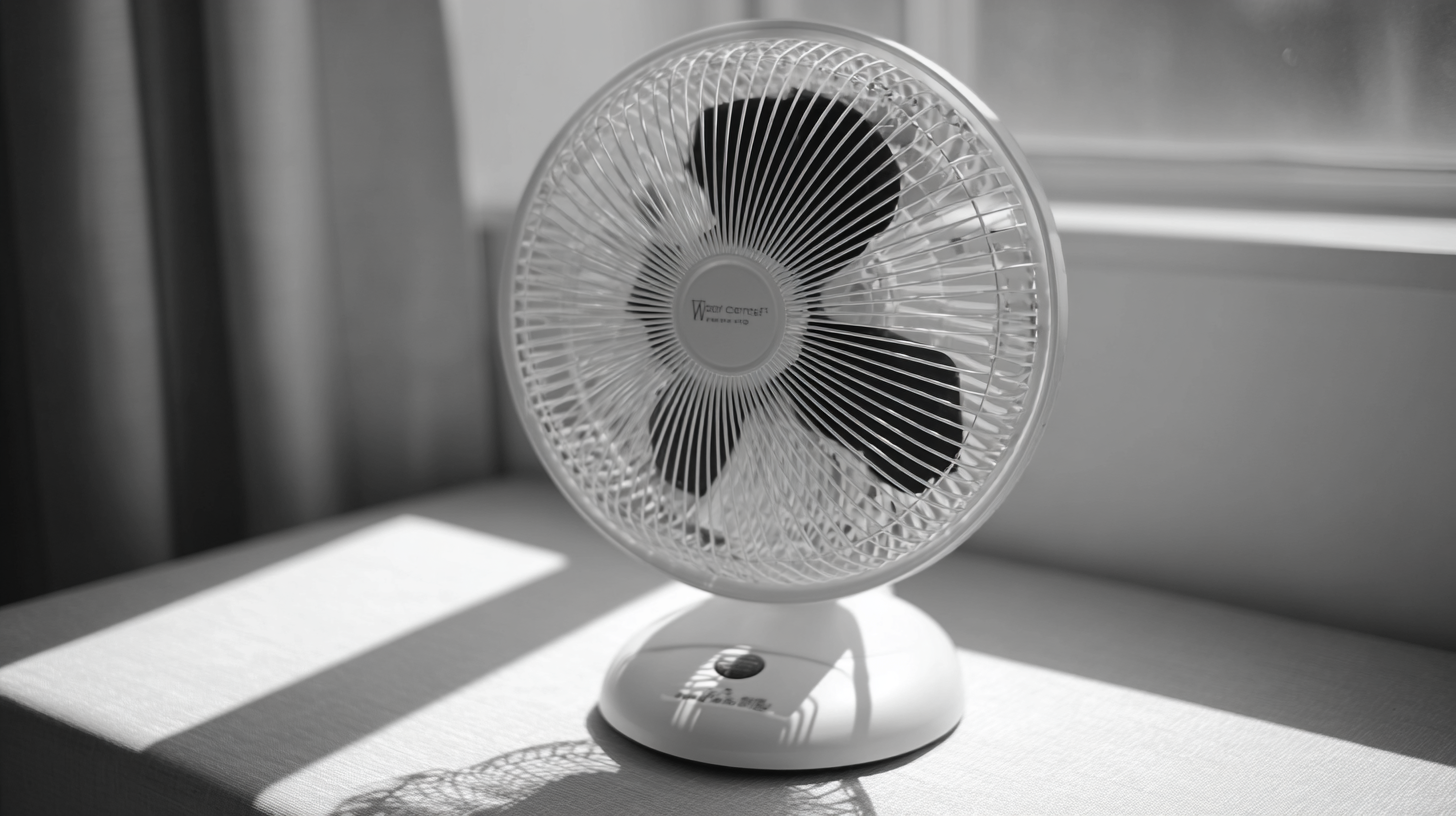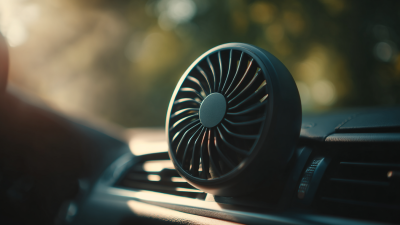 Choosing the right table fan can significantly enhance airflow efficiency and personal comfort, especially during hot weather conditions. According to a report by the American Society of Heating, Refrigerating and Air-Conditioning Engineers (ASHRAE), optimal airflow is essential for maintaining thermal comfort in indoor environments.
Table fans, specifically, are designed to provide targeted cooling, making them an ideal choice for personal spaces.
Data from the Consumer Electronics Association indicates that over 30% of households in North America use table fans as an effective alternative to air conditioning, contributing to energy savings and environmental benefits.
By understanding factors such as fan size, speed settings, and design features, consumers can make informed decisions to select a table fan that not only improves airflow but also enhances their overall comfort.
Choosing the right table fan can significantly enhance airflow efficiency and personal comfort, especially during hot weather conditions. According to a report by the American Society of Heating, Refrigerating and Air-Conditioning Engineers (ASHRAE), optimal airflow is essential for maintaining thermal comfort in indoor environments.
Table fans, specifically, are designed to provide targeted cooling, making them an ideal choice for personal spaces.
Data from the Consumer Electronics Association indicates that over 30% of households in North America use table fans as an effective alternative to air conditioning, contributing to energy savings and environmental benefits.
By understanding factors such as fan size, speed settings, and design features, consumers can make informed decisions to select a table fan that not only improves airflow but also enhances their overall comfort.
When selecting a table fan for optimal airflow efficiency, it's crucial to understand the different types of fans available on the market. According to a report by the U.S. Department of Energy, well-designed fans can enhance indoor air circulation, potentially reducing energy costs by up to 30%. There are primarily three types of table fans: axial, centrifugal, and bladeless. Axial fans, commonly seen in households, operate by drawing air in through a rotating blade assembly, providing a direct airflow which is ideal for personal comfort.
Centrifugal fans, on the other hand, use a rotating impeller to create airflow, pushing air out at a 90-degree angle from the intake. This design allows for higher pressure and is particularly effective in larger spaces or when ducting air to specific areas. Recent analysis from the Fan Manufacturers Association indicates that centrifugal fans are often more efficient for cooling larger areas, with reports suggesting that they can operate at 15-20% higher efficiency compared to standard axial fans. Finally, bladeless fans offer a sleek design with a unique airflow mechanism that produces a smooth, uninterrupted stream of air, making them an appealing choice for modern interiors while still delivering a significant amount of air movement. Understanding these different types will help ensure maximum airflow efficiency and comfort in any setting.
When selecting a table fan, several key features can significantly enhance airflow efficiency and overall comfort. One important aspect is the fan's blade design. According to a report from the American Society of Mechanical Engineers, fans with aerodynamically optimized blades can increase airflow by up to 20%, providing a refreshing and consistent breeze. Additionally, the motor type plays a critical role in performance; brushless DC motors are known to be more energy-efficient and quieter than traditional AC motors, making them ideal for long-term use in living spaces.
**Tips:** Look for fans that offer adjustable height and oscillation features, enabling you to direct airflow precisely where it's needed. An adjustable timer function can also enhance convenience, allowing users to set the fan to operate during specific hours, thus conserving energy when not in use.
Another vital feature to consider is the fan's noise levels, especially in environments where quiet operation is essential, such as in bedrooms or offices. A study published by the International Journal of Environmental Research found that table fans operating below 50 decibels are perceived as comfortable and non-disruptive. Selecting a model with sound-dampening materials can contribute to a more pleasant atmosphere while maintaining optimal airflow efficiency.
| Feature | Description | Benefits |
|---|---|---|
| Size | Available in various diameters (12", 16", 20") | Choose size based on room size for optimal cooling |
| Speed Settings | Multiple speed settings (low, medium, high) | Adjust airflow to comfort level in different conditions |
| Oscillation | Ability to tilt and oscillate | Covers larger areas for better airflow distribution |
| Noise Level | Measured in decibels (dB) | Quiet operation is ideal for bedrooms and offices |
| Energy Efficiency | Energy Star rated models | Saves on electricity bills and is environmentally friendly |
| Design and Portability | Lightweight and compact design | Easy to move from room to room as needed |
When selecting the right table fan for optimal airflow efficiency and comfort, understanding the
ideal size and power
for your space is crucial. A fan's size directly impacts its ability to circulate air effectively. According
to the American Society of Heating, Refrigerating and Air-Conditioning Engineers (ASHRAE), a fan should
have a blade diameter of at least 12 inches for spaces under
100 square feet, while larger areas may require fans with
diameters of 16 inches or more to ensure adequate airflow.
In addition, the fan's motor power, typically measured in watts, influences how much air can be moved;
fans with 50 to 75 watts are generally sufficient for standard
room sizes.
Tips: When choosing a fan, consider the height of your room. Higher ceilings may benefit from fans with
adjustable heights or tilt features to ensure airflow reaches all areas comfortably. Additionally, if
your space has limited ventilation, opting for multiple smaller fans strategically placed around the room
can enhance air movement better than a single large one.
Moreover, it’s important to look at the fan’s airflow rating, often measured in
cubic feet per minute (CFM). For optimal performance, choose
a fan that can achieve at least 100 CFM per 10 square feet of space.
This ensures that the airflow is sufficient to create a comfortable environment,
especially in warmer months or crowded areas.
When selecting a table fan, understanding noise levels and energy efficiency is essential for creating a comfortable environment. According to the American National Standards Institute (ANSI), noise levels in fans can vary significantly, with the most suitable models generating a sound level of about 40 to 50 decibels for a peaceful atmosphere. Fans exceeding 60 decibels can disrupt conversation and relaxation, making it crucial to evaluate the specifications before purchasing.
Energy efficiency is another vital consideration. The U.S. Department of Energy emphasizes that high-efficiency fans can reduce energy consumption by up to 50% compared to standard models. Look for fans labeled with the Energy Star certification, which signifies they meet stringent energy efficiency guidelines. Some modern designs boast DC motors, which are notably more energy-efficient than traditional AC motors, consuming less power while delivering strong airflow.
**Tips:**
1. When testing a fan, listen for its noise levels in different speed settings to find the quietest option for your space.
2. Check the fan's wattage; lower wattage typically indicates better energy efficiency.
3. Consider the fan’s airflow settings and choose models that offer adjustable speeds to optimize comfort without excessive energy use.

 To ensure your table fan operates at optimal performance, regular maintenance and cleaning are essential.
Dust and dirt can accumulate on the blades and grills, reducing airflow efficiency and increasing noise levels.
To clean your fan, start by unplugging it for safety. Use a soft cloth or a microfiber towel to gently wipe down the blades
and the exterior surfaces. For stubborn dirt, a mixture of mild soap and water can help. Ensure you dry all components thoroughly
before reassembling and plugging the fan back in.
To ensure your table fan operates at optimal performance, regular maintenance and cleaning are essential.
Dust and dirt can accumulate on the blades and grills, reducing airflow efficiency and increasing noise levels.
To clean your fan, start by unplugging it for safety. Use a soft cloth or a microfiber towel to gently wipe down the blades
and the exterior surfaces. For stubborn dirt, a mixture of mild soap and water can help. Ensure you dry all components thoroughly
before reassembling and plugging the fan back in.
In addition to exterior cleaning, it's important to check the fan's motor and wiring periodically.
Look for any signs of wear or dust buildup that could hinder performance.
If your fan has removable parts, take the time to disassemble it as per the manufacturer's instructions for a more
thorough cleaning. Regular maintenance not only prolongs the lifespan of your table fan but also ensures that it runs
quietly and efficiently, providing you with the comfort you need during warm days.






